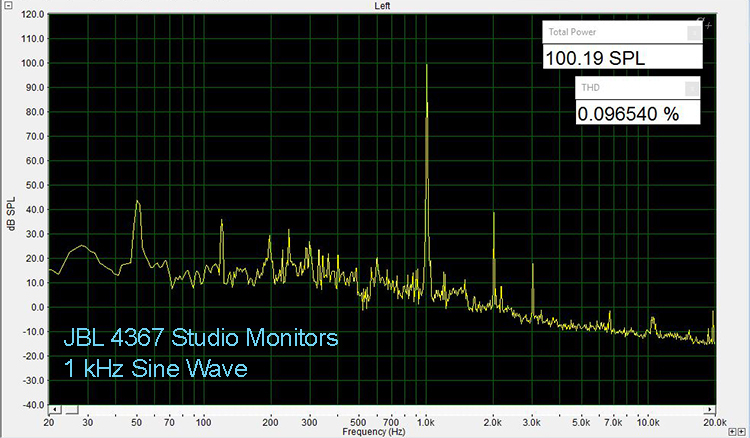watchnerd
Grand Contributor
I was reading some reviews of some Klipsch "Heritage" series horn speakers, all of which have high sensitivities in the high 90s to low 100s and thinking about:
a) The alleged low distortion of horns and what that would mean at normal listening levels for total speaker distortion
b) That my amp has more distortion at low wattage than higher wattage (until the power limit is hit)
c) That the super high sensitivity of horn speakers would mean listening to my amp in the more distorted part of its range, at normal volumes
My amp is a Devialet Expert 440. These are the charts for the lower-wattage Expert 130, but I think the same pattern would still hold true with the higher output model:
Chart 2 - Distortion as a function of power output and output loading

(Line up at 20W to determine lines)
Top line = 4-ohm SMPTE IM distortion
Second line = 8-ohm SMPTE IM distortion
Third line = 4-ohm THD+N
Bottom line = 8-ohm THD+N
Chart 3 - Distortion as a function of power output and frequency

(8-ohm loading)
Red line = 1W
Magenta line = 10W
Blue line = 30W
Cyan line = 60W
Green line = 80W
[Charts courtesy of: https://www.soundstagenetwork.com/i...er&catid=97:amplifier-measurements&Itemid=154]
I usually listen in the 75-85 dB range, with peaks up to about 90 dB, at the listening seat.
Taking a hypothetical use case of a Klipsch Cornwall (102 dB), and plugging it into:
https://myhometheater.homestead.com/splcalculator.html
I get <0.3 Watts for my typical listening level and distance.
But 0.3 Watts / 300mW, from the chart above is about .01% THD + N, which is not awesome from an electronics point of view.
So am I better off with less sensitive speakers so that the amp can run in its "preferred power range"?
Or does the reduction in speaker distortion due to high efficiency trump anything happening on the electronics side?
a) The alleged low distortion of horns and what that would mean at normal listening levels for total speaker distortion
b) That my amp has more distortion at low wattage than higher wattage (until the power limit is hit)
c) That the super high sensitivity of horn speakers would mean listening to my amp in the more distorted part of its range, at normal volumes
My amp is a Devialet Expert 440. These are the charts for the lower-wattage Expert 130, but I think the same pattern would still hold true with the higher output model:
Chart 2 - Distortion as a function of power output and output loading

(Line up at 20W to determine lines)
Top line = 4-ohm SMPTE IM distortion
Second line = 8-ohm SMPTE IM distortion
Third line = 4-ohm THD+N
Bottom line = 8-ohm THD+N
Chart 3 - Distortion as a function of power output and frequency

(8-ohm loading)
Red line = 1W
Magenta line = 10W
Blue line = 30W
Cyan line = 60W
Green line = 80W
[Charts courtesy of: https://www.soundstagenetwork.com/i...er&catid=97:amplifier-measurements&Itemid=154]
I usually listen in the 75-85 dB range, with peaks up to about 90 dB, at the listening seat.
Taking a hypothetical use case of a Klipsch Cornwall (102 dB), and plugging it into:
https://myhometheater.homestead.com/splcalculator.html
I get <0.3 Watts for my typical listening level and distance.
But 0.3 Watts / 300mW, from the chart above is about .01% THD + N, which is not awesome from an electronics point of view.
So am I better off with less sensitive speakers so that the amp can run in its "preferred power range"?
Or does the reduction in speaker distortion due to high efficiency trump anything happening on the electronics side?



